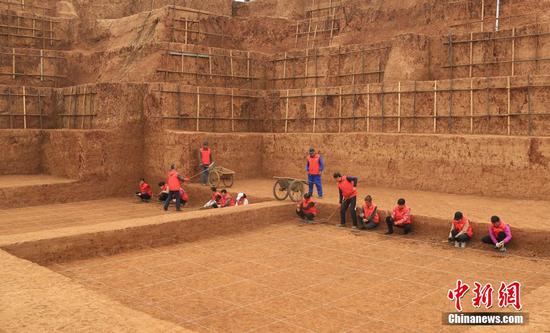Ruins in northwest China confirmed as 3,000-year-old settlement
Ruins discovered in northwest China's Shaanxi Province were confirmed to be a large-scale settlement from about 3,000 years ago, according to archaeologists.
The ruins of Xunyi Xitou are in the Xianyang City of Shaanxi, excavation of which started in 2018, according to the Society for Shaanxi Provincial Archaeology. They cover about 2 million square meters, one of the biggest settlements left from the Shang and Zhou Dynasties.
Archaeologists have found remains of earth circumvallation, trenches, and roads dating back to the Western Zhou Dynasty (1046-771 B.C.) and believed there had been a city covering about 800,000 square meters.
They also discovered a cemetery more than 150,000 square meters in size, with nearly 1,000 tombs. In 2022, three massive tombs were uncovered, one of which, registered as M90, was from the end of the Shang Dynasty (1600-1046 B.C.) and the beginning of Zhou. From the tomb, archaeologists unearthed the remains of 38 people buried as human sacrifices in three layers, as well as relics of seashells, stoneware, bone objects, jade articles, pieces of bronze artifacts and ceramics, etc.
Copper ore leftovers, stove relics, and pottery were found in the northeast of the city. Archaeologists believed the venue had been used during the early to mid-Western Zhou Dynasty.
Dou Haifeng, vice dean of the School of Cultural Heritage at Northwest University, heading the excavation project, noted that the findings could provide valuable evidence for studies in the settlement layout, the composition of residents, and social change in the Shang and Zhou Dynasties. They are also significant for studying the origin and development of the Zhou civilization.

